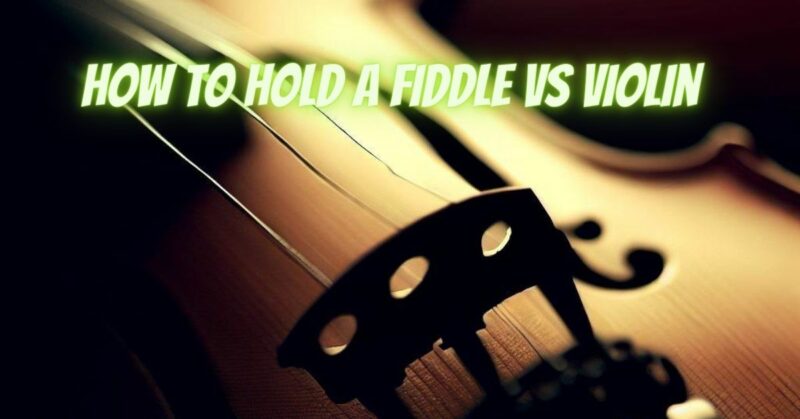When it comes to holding a fiddle (also known as a violin), there are slight differences in technique compared to holding a violin in a classical setting. The fiddle is often associated with folk, bluegrass, and country music, and its unique playing style requires a specific grip to achieve the desired sound and technique. In this article, we will explore the differences in how to hold a fiddle versus a violin and provide tips to help you find the proper grip for each instrument.
- Fiddle Grip:
- Position the fiddle on your shoulder, resting the chin on the chinrest. Unlike a classical violin, the fiddle is typically played without the use of a shoulder rest.
- The fiddle is usually tilted slightly forward, with the fingerboard angled more towards the player. This helps create a more relaxed and comfortable playing position.
- The left hand should have a relaxed and curved shape, with the fingers lightly touching the strings to achieve clear and precise notes.
- The bow hand should hold the bow with a slightly looser grip compared to classical violin playing. This allows for greater flexibility and control when playing rhythmic and bowing patterns common in fiddle music.
- Violin Grip:
- Place the violin on your shoulder with the chin resting on the chinrest. Most classical violinists use a shoulder rest to provide additional support and stability.
- The violin should be held parallel to the floor, with the fingerboard positioned at a slight angle.
- The left hand should have a curved and relaxed shape, with the fingers positioned on the strings to produce clear and accurate notes.
- The bow hand should hold the bow with a firm but flexible grip. The thumb should be positioned opposite the middle and ring fingers, providing stability and control during bowing.
- Finding the Right Technique:
- It’s important to note that the grip and technique for holding a fiddle or violin may vary slightly depending on the individual player’s preferences and the specific style of music being played.
- Experiment with different hand positions and bowing techniques to find what feels most comfortable and allows you to achieve the desired sound.
- It can be helpful to observe experienced fiddle and violin players or seek guidance from a teacher or instructor who can provide personalized tips and feedback.
Conclusion:
The grip and technique for holding a fiddle versus a violin may differ slightly to accommodate the specific playing styles and genres associated with each instrument. Whether you’re playing a fiddle for folk music or a violin for classical music, finding the right grip and hand position is crucial for achieving the desired sound and technique. Remember to maintain a relaxed and comfortable posture, experiment with different techniques, and seek guidance from experienced players or instructors to further refine your playing skills. With practice and proper technique, you’ll be able to embrace the unique characteristics and musical possibilities of both the fiddle and the violin.

